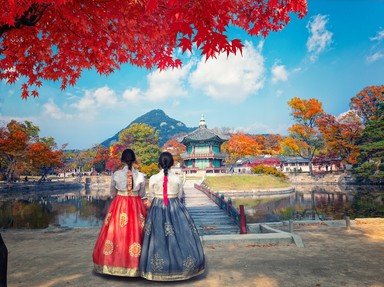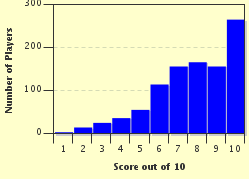Quiz Answer Key and Fun Facts
1. This is a map, published around 1750, of a city identified as Gyeongdo. What is the contemporary name of this city, which is the largest city in the Republic of Korea?
2. This location map of South Korea shows that it only shares a land border with one other country. What is its only neighbour?
3. This map, dating from the early 18th century, shows the Korean peninsula running vertically on the right side of the map. What is the name of the body of water separating the Korean peninsula from the country, now known as the People's Republic of China, on the left side of the map?
4. South Korea's nearest neighbour without a shared land border is shown in the lower right corner of this map. What archipelagic nation claims sovereignty over Tsushima Island, which lies approximately 50 km (30 mi) off the coast of South Korea?
5. The red circle on this map indicates what is claimed to be the easternmost point of South Korea, although ownership of the territory is disputed. Which of the following is NOT a name for this island?
6. This map of the maritime border between North and South Korea shows the westernmost point of South Korea, an island numbered '2' on the map. What is its name?
7. This map of South Korea's national parks includes the country's largest island, Jeju, number 20. The island of Jejudo is the location of the highest point in South Korea. What is the name of this dormant volcano?
8. South Korea is known to be very mountainous, as this topographic map shows. What is the name of the mountain range extending along much of its eastern coast?
9. This map of the administrative divisions of South Korea shows Seoul, the country's only Special City, as 1, and Sejong, a Special Self-governing City, as 6. The Special Autonomous Province of Jeju is number 16. The numbers 2 through 7 (excluding 6) and 8 through 15 indicate the location of the other two types of administrative division to be found in South Korea. What are these divisions called?
10. This aerial photo from NASA shows Cheonsuman Bay, in the city of Seosan, on the western coast of Korea. This area is host to an annual festival celebrating which of the following?
Source: Author
looney_tunes
This quiz was reviewed by FunTrivia editor
Pagiedamon before going online.
Any errors found in FunTrivia content are routinely corrected through our feedback system.

